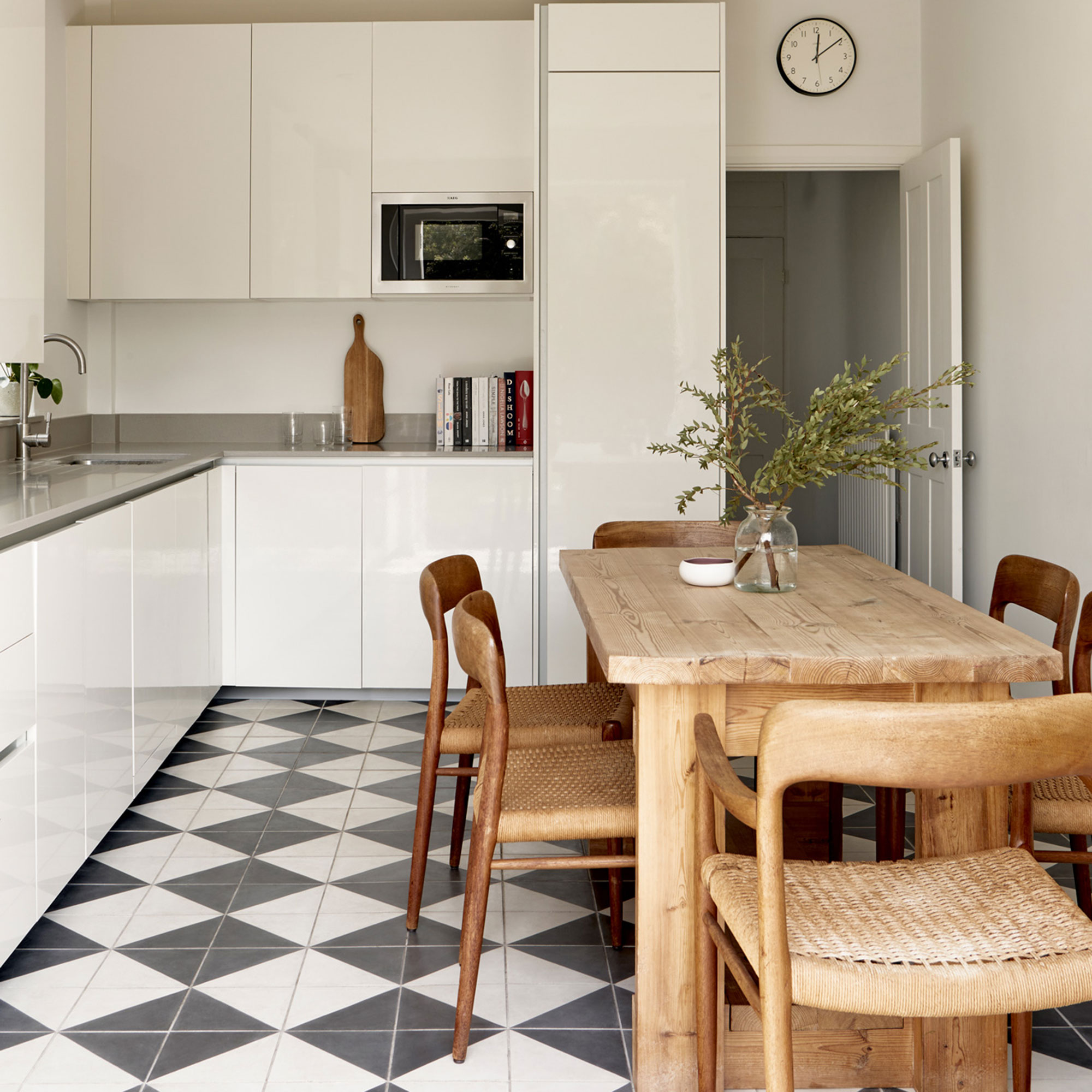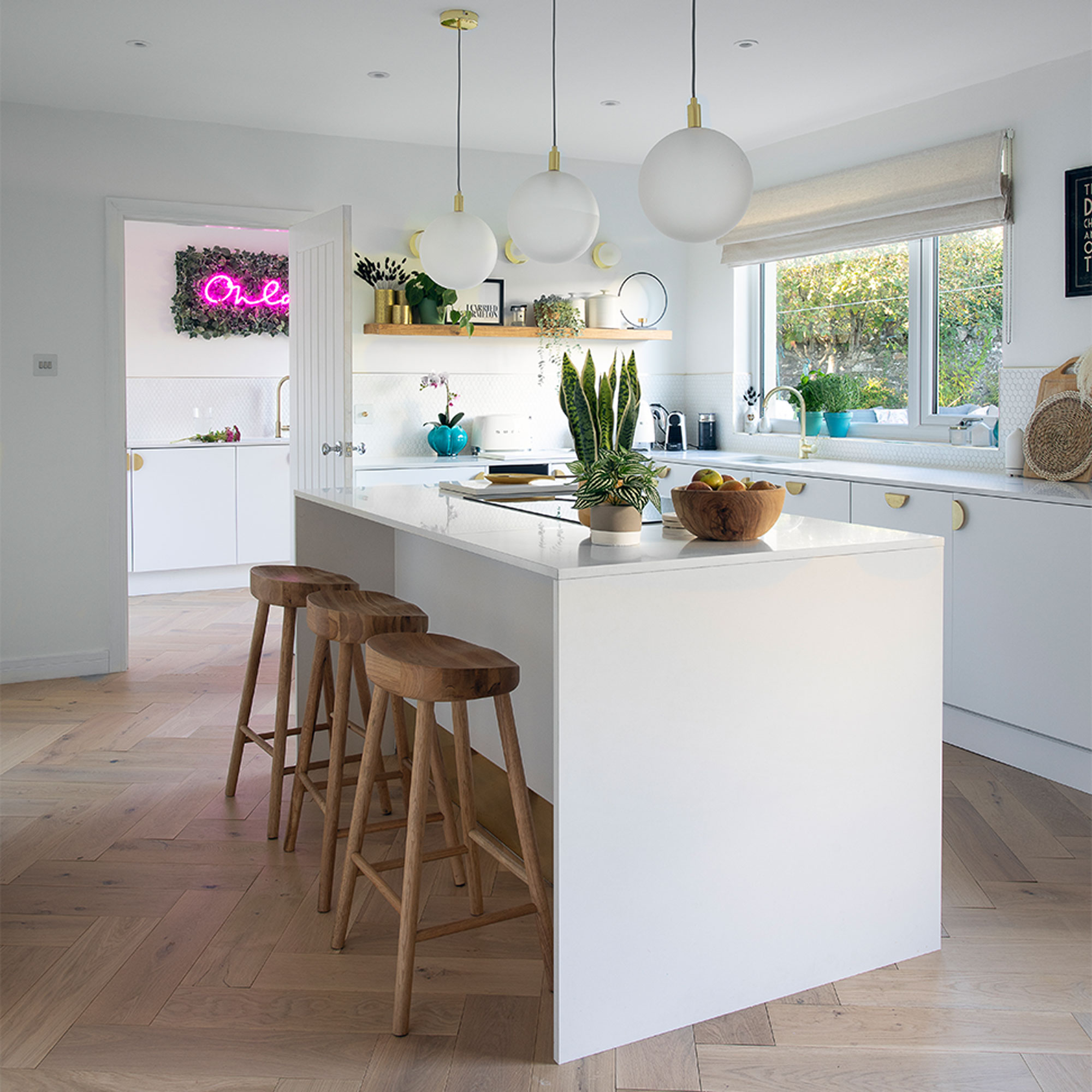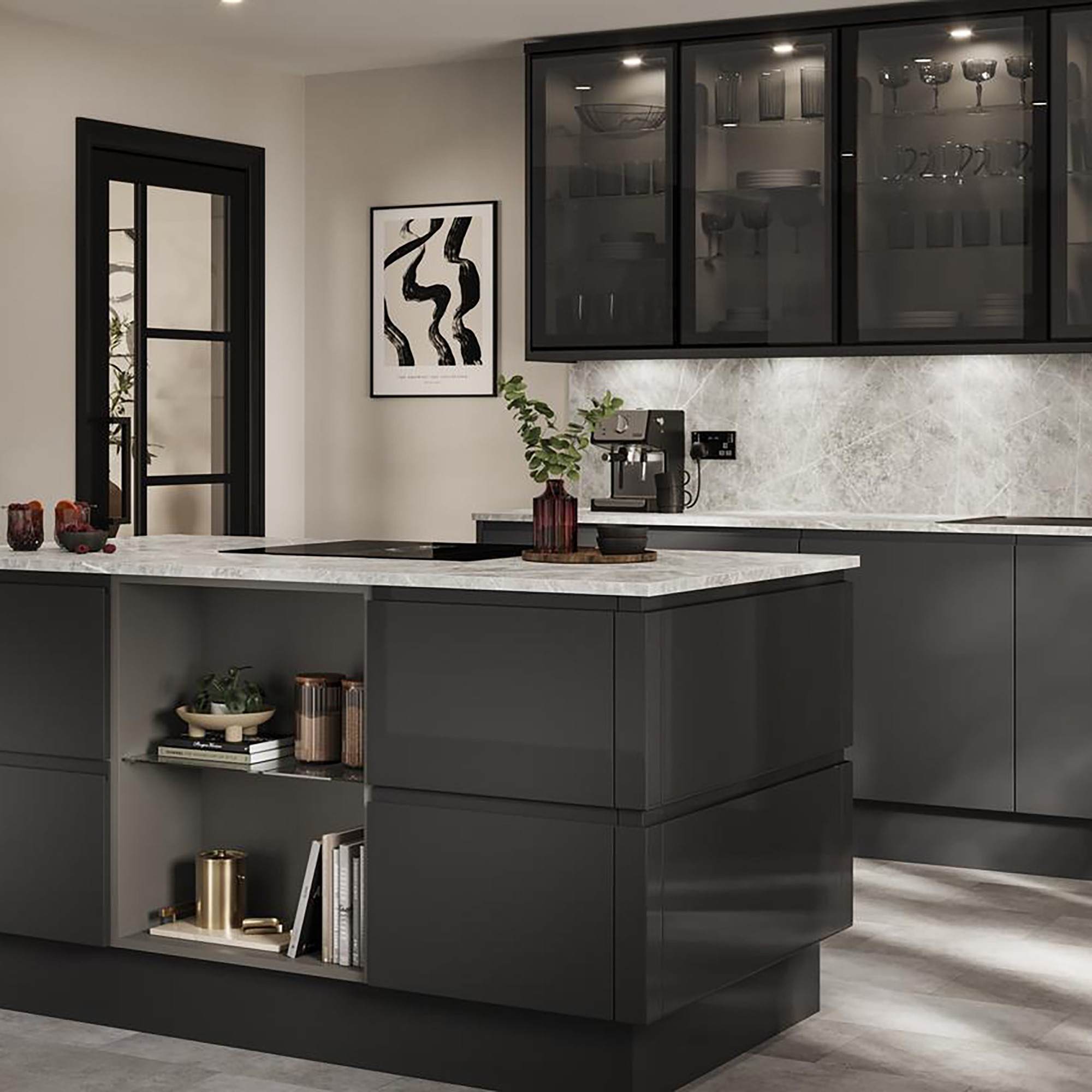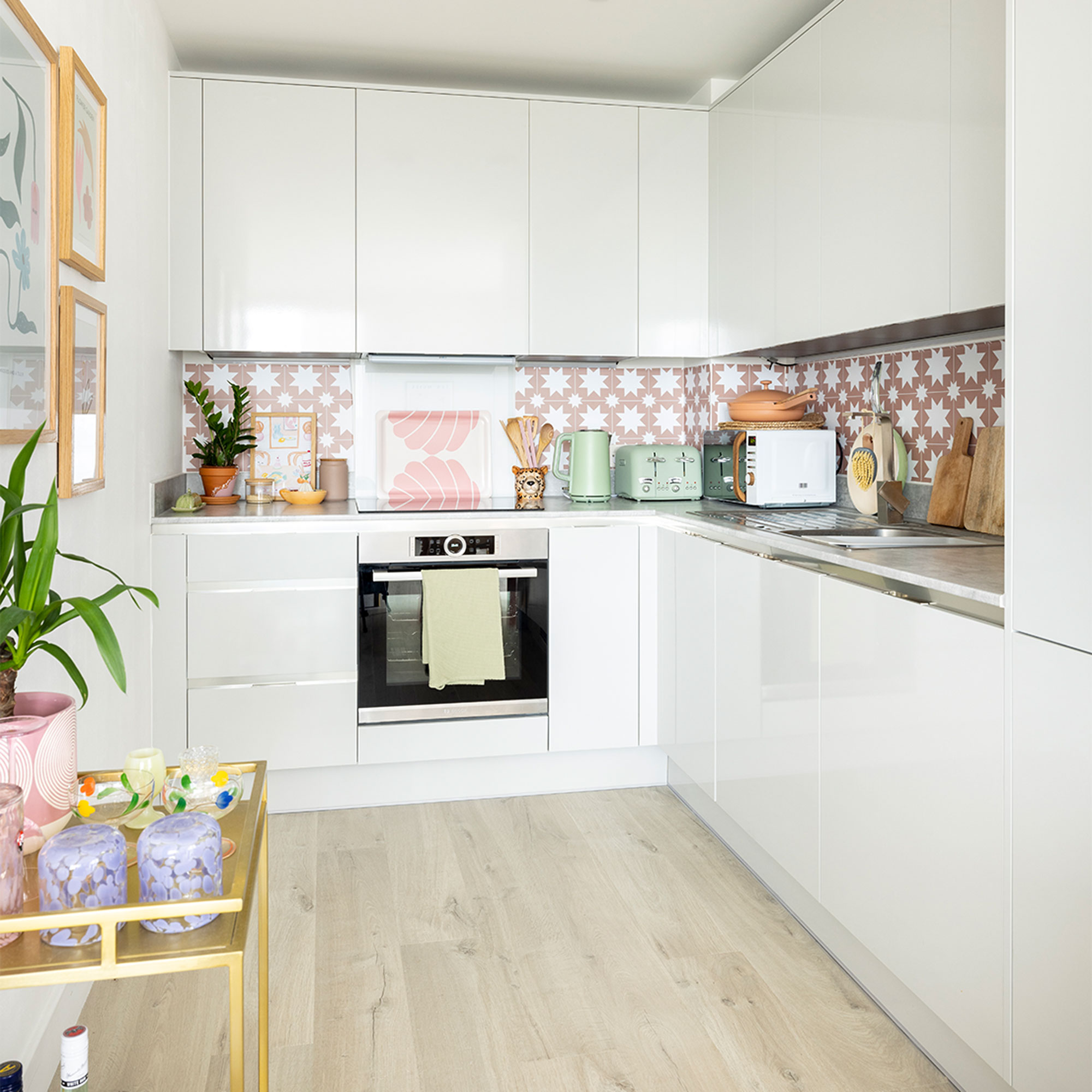
Getting bored of your kitchen colour scheme isn't an ideal issue to face, but in the age of DIY and paintable wooden doors, you might be wondering - can you paint gloss kitchen cabinets?
Shaker kitchen ideas are commonly repainted to account for changing tastes, and trends and of course to refresh the appearance. But if your style is more in line with modern kitchen ideas, it's not as clear-cut on whether you can paint gloss kitchen doors yourself.
Will the paint stick? Will it damage the veneer? These are all valid questions, which is why we've asked the experts whether you can indeed paint gloss cupboards, and which paint to use to get the best finish.
Can you paint gloss kitchen cabinets?
No matter how carefully you've planned a new kitchen, you might find yourself tired of the scheme years down the line. Luckily, with a paint idea or two, you can revamp the colour palette without renovating the entire space.
'Repainting your kitchen cupboards is an easy way to redecorate your kitchen on a budget or without having a new kitchen fitted. However, different surfaces and materials will require certain methods to ensure that the paint adheres correctly. In terms of gloss-painted kitchen cupboards, they can be painted but there are some steps that you will need to follow,' advises Tim Warren, a DIY expert from Adkwik.

What you need to paint gloss kitchen cupboards
• Primer (unless your chosen paint is self-priming)
• Gloss paint
• Rollers and paintbrushes
• Damp cloth
• Sugar soap
• Screwdriver
How to paint gloss kitchen cabinets
1. Remove the doors
You'll need to start by taking the kitchen cabinet doors off the hinges and laying them on a flat surface. If you don't have enough space in your kitchen or garage to do this while still living around it, you might be better off painting them in stages.
'For the best overall finish, remove the doors from their hinges and lay them on a flat surface. Remove any fixtures and fittings on the doors, such as handles or knobs, so that they will be easier to paint,' adds Tim.
2. Preparation is key
When starting a DIY project it's natural to want to get stuck right in, without reading any instructions or taking time to do the prep work. But when faced with such a large (and expensive) area like your kitchen, it pays to take a bit more care and consideration with preparing, so that they end up looking as professional as possible.
Tim recommends, 'Before painting, prepare the cupboard surface by thoroughly cleaning the doors with sugar soap to get rid of dirt, grease and grime. After scrubbing with a kitchen scouring sponge, use a clean, damp cloth to remove any soap residue or leftover dirt and leave to dry.'
'Tape plastic sheeting to worktops and floors to protect them and avoid paint spills. Use a degreasing agent like TSP to get any grease off of cabinet surfaces. Special attention should be paid to areas underneath the cabinets, around the handles, and under the bottom of the edges of cupboard doors. This will ensure that the paint adheres properly and you achieve your desired look,' adds Michael Rolland, Managing Director at The Paint Shed.

3. Make sure the surface is smooth
We know what you're thinking, gloss is smooth, but wear and tear can result in there being cracks and holes in your kitchen cabinets so filling them all in is key before you start painting.
'If there are any cracks or holes in the cupboard doors, you should firstly fill these in with wood filler and allow them to dry. Then, sand the cupboard surface down to remove the gloss finish so that the paint will stick better. After sanding, use a dry paint brush to dust away any residue left behind from sanding,' Tim advises.
Michael continues, 'Using either 220 or 400-grit sandpaper, give your cabinets a light sand to provide your paint with a surface to adhere to. Cabinets with an open-grained finish like oak, for example, you should use a heavier grit sandpaper, so in this case, 400-grit.'
4. Prime, prime, prime
'Apply a coat of primer before painting if you are not using a self-priming paint, as this will provide a longer-lasting finish,' Tim stresses. Without priming, you may get less than ideal results, resulting in wasted time, money and resources.
'Once the primer is completely dry, give the cupboards a light sanding to smooth out brush strokes, before vacuuming and wiping your cabinets with a tack cloth to clean away any debris,' Michael adds.

5. Get painting
'Using a high-quality brush or smooth roller, apply a thin coat of paint to the cabinets before letting them dry flat (this avoids drip marks). When dry to the touch, turn them over and paint the other side,' Michael instructs.
'Give it a few hours before applying a second coat. Applying three or more thin coats is better than two thick ones - not only will you get a better finish, but also a more hard-wearing one.'
If you have hardware on your doors you'll want to either remove these first or tape around them. Using a small brush to paint around these first before going in with a roller for the rest of the cabinet will be the easiest method.
6. Touch up the edges
The devil is in the detail and when you're using a room as regularly as you do a kitchen, you don't want to be frustrated by staring at imperfect finishes and scuffed edges.
Using a small brush to work around the edges of the cabinet and to perfect any details on the cabinets will ensure you haven't missed anything.

Which paints to use on gloss kitchen cabinets
'A semi-gloss paint is recommended when painting kitchen cabinets,' Michael recommends. You might want to paint gloss kitchen cabinets to change up the texture of your scheme and move away from the shiny look, but flat matte paints aren't likely to give you the best finish.
'A flatter paint will leave a chalky feel, and using high-gloss paint will highlight brush strokes or roll marks – so unless you’re an exceptional painter then semi-gloss is preferable,' Michael adds.
'In terms of colour, white and other neutral colours are firm favourites in the kitchen. Painting your cabinets white or a very pale colour also gives you lots of room to add accent colours elsewhere. Tikkaruila Helmi 10, Tikkurila Luja 20 and Tikkurila Helmi 30 are all good paint options for kitchen cabinets.'
FAQs

Can you spray paint gloss kitchen cabinets?
Spray painting is a popular method when it comes to revamping the look of your kitchen cabinets, as it's much faster and removes the stress of poor-looking brushstrokes. Many professionals also offer this service to completely take the stress out of your hands.
Tim reliably informs, 'You can also use spray paint to paint gloss kitchen cupboards, but you should not sand the base surface before using this as scratches may show up easily through the thinner layers of paint. Painting will need to be done in a well-ventilated area due to the fumes and to avoid mess, but you can hire professionals who can do this for you as it can be a difficult job.'
It's not a amateur DIY job to undertake but if you're set on switching up your kitchen colour scheme then with some careful planning, you can definitely paint gloss kitchen cabinets at home.







